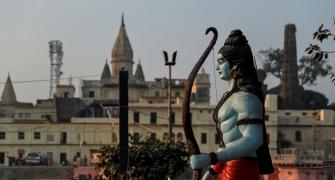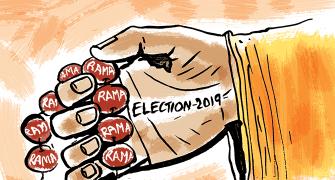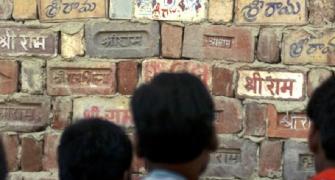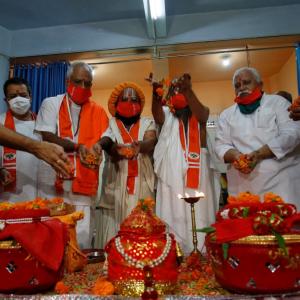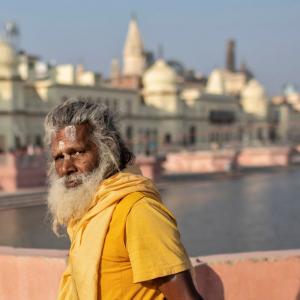If Saudi Arabia, with just two Muslim holy sites of Mecca and Medina, can create a huge tourism-based ecosystem beyond oil, Ayodhya is sure to become the world's hottest religious tourism site in less than a decade, predicts R Jagannathan.
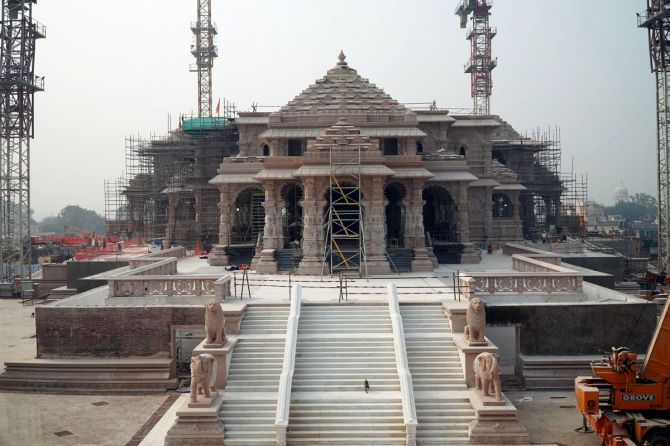
India has been on course for a new tryst with destiny since the late 1980s, with the rise of Mandal politics and the Ram Janmabhoomi movement.
The Bharatiya Janata Party's ability to tap into the complementarities between the two culminated in a first term for the BJP-led National Democratic Alliance from 1998 to 2004.
Although it lost some steam during the United Progressive Alliance years, it has now again picked up pace under Narendra Modi.
The second tryst will hit its first major milestone when the Ram Mandir is consecrated on January 22 in Ayodhya.
This article will focus on the economic and social impact of the Ayodhya temple, which will go far beyond the immediate surroundings of this ancient capital city of the Ramayana.
The economic impact will be significant, not least because of the Rs 85,000 crore (Rs 850 billion) infrastructure investment planned in and around Ayodhya, including a new township spread across 1,200 acres.
If India is to become a $5 trillion economy in the next few years, and $10 trillion by the mid-2030s, it cannot be done by just depending on the growth engines of Maharashtra, Tamil Nadu, Karnataka, Delhi-Haryana, and Telangana. Uttar Pradesh and Bihar have to rise to the challenge.
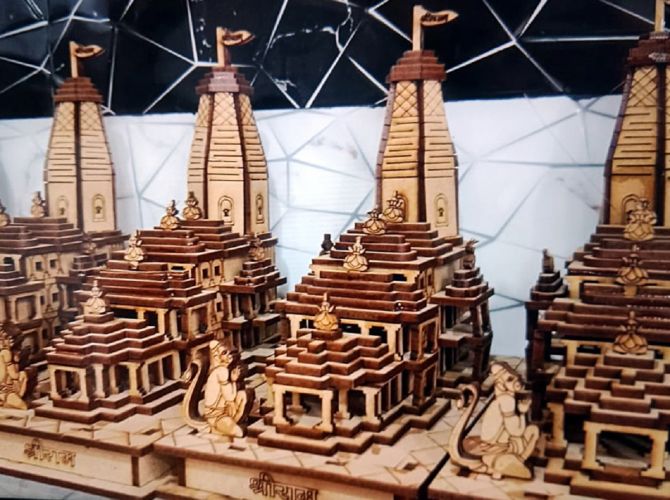
Uttar Pradesh is among the top five states by gross state domestic product (GSDP), but sinks to the bottom five in terms of projected per capita income in 2023-2024, according to data from PRS Legislative Research and the ministry of statistics and programme omplementation.
Among the top five, Maharashtra and Tamil Nadu have projected GSDPs of Rs 39 trillion and Rs 28 trillion this fiscal, while the next three (Gujarat, Karnataka and UP) are neck and neck with Rs 24 trillion to Rs 25 trillion each.
UP's per capita income is abysmal at around Rs 83,000 -- far below the national average and less than one-third of the neighbouring Hindi state of Haryana.
With the rise of Ayodhya as a major religious destination over the next few years, UP effectively gets a new growth and income driver.
The western part of UP is already a startup and manufacturing hub, thanks to Noida, which is a crucial part of the National Capital Region.
What Gurugram and Haryana gained from their proximity to Delhi over the last few decades, Noida and western UP will in the coming decades, thanks partly to the return of political stability in the state and massive investments in expressways and new airports, including Jewar.
What UP may be witnessing is a significant shift in the economic and political centre of gravity eastwards, as was the case in ancient India, where Ayodhya and Pataliputra (present-day Patna) were the hubs.
The golden tourist triangle of Delhi, Agra and Fatehpur Sikri will now be complemented by the Ayodhya-Prayagraj-Kashi trio in the east of the state.
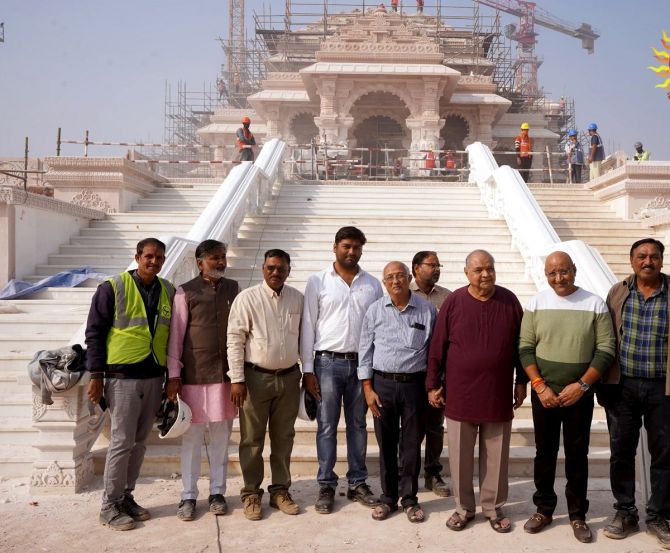
It is difficult to overstate Ayodhya's potential, not least because of the huge religious and spiritual significance of the ancient capital of Lord Rama's kingdom. And here is my prediction: If Saudi Arabia, with just two Muslim holy sites of Mecca and Medina, can create a huge tourism-based ecosystem beyond oil, Ayodhya is sure to become the world's hottest religious tourism site in less than a decade.
The reason for this prediction: Unlike sparsely populated Saudi Arabia, where religious tourism necessarily depends on Muslims from all over the world congregating there for Hajj or Umrah -- a privilege not all Muslims can afford -- Ayodhya will cater to the religious needs of the world's largest Hindu country, not to speak of foreign tourists.
For the vast majority of Indians, no borders have to be crossed, no foreign exchange bought, and no major travel expenses incurred to visit Ayodhya.
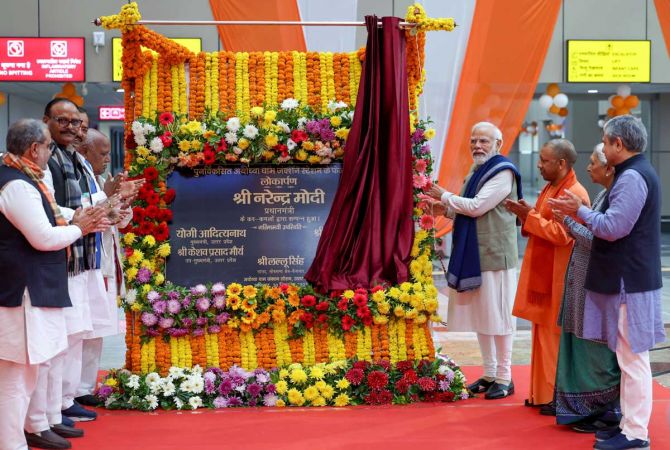
In-bound tourism in Saudi Arabia is approximately 16 million to 17 million annually. Ayodhya is expecting 4.5 million monthly, or nearly 54 million annually -- which will be more than Tirupati's estimated annual visitors of 30 million.
Even if we assume a modest spend of Rs 2,500 per head, it means a collective tourist spend of more than Rs 13,500 crore (Rs 135 billion) --which again would be an underestimate.
Many well-heeled Indian and foreign tourists will spend 10 or 20 times more, making Rs 20,000 crore (Rs 200 billion) a more reasonable estimate. And this is just one city we are talking about.
The World Travel and Tourism Council reckons that Saudi Arabia's share of tourism in GDP will rise to 17 per cent by 2032, while India's current share is just under 7 per cent.
With the north now likely to attract more religious tourists than ever, we should see a massive leap in tourism's share of GDP, and commensurate gains in employment.
Unlike other sectors, tourism is one area where the employment elasticity of growth is high, since it uses more people for every unit of investment.

According to the Travel Agents Association of India, by 2028 or 2029, the tourism sector will contribute $512 billion to India's GDP, creating 58 million jobs.
That could again be an underestimate if UP really opens up for religious tourism not only in Ayodhya, but also in Kashi and Mathura, where too there is religious contention between Hindus and Muslims.
Ten per cent of GDP from tourism is hardly a stretch target for India in the next five years, considering we had crossed 7 per cent before Covid. UP should lead the way.
At some point, the state should become India's No 2 economy behind Maharashtra, leveraging both its demographic advantage and religious attractions to lift itself out of poverty.

This brings us to the issue of social harmony, something impacted by Hindu-Muslim wrangles over the Ram Janmabhoomi, and the ongoing court battles over Kashi and Mathura. But here's the point: The real damage to Hindu-Muslim relations was not caused by the Ayodhya issue, but rather by the efforts of Leftist historians to create a false narrative around temple destruction during Islamic rule.
This ultimately led to their denial of the existence of a Hindu temple below the Babri Masjid. The same goes for Kashi and Mathura.
One hopes that ordinary Hindus and Muslims realise that cordial community relationships cannot be built on a denial of past Islamic iconoclasm.
A truth and reconciliation commission, of the kind recommended by one Supreme Court judge in the Article 370 verdict, is even more important in Uttar Pradesh.
More so when considering that UP's Muslims were also at the heart of Mohammed Ali Jinnah's Pakistan project, with the biggest and most decisive votes in favour of Partition coming from the precursor province to current-day UP.
The Supreme Court bench that delivered the Ayodhya judgment probably realised that Hindus and Muslims have to overcome the mistrust inherited from history, and hence a cooling-off period with separate locations for the temple and mosque would work best.
If the new mosque planned near Ayodhya lives up to its earlier billing and draws huge numbers of pilgrims, that will be one more focus area for UP's economic rise.
Disclaimer: These are R Jagannathan's personal views.
Feature Presentation: Rajesh Alva/Rediff.com


